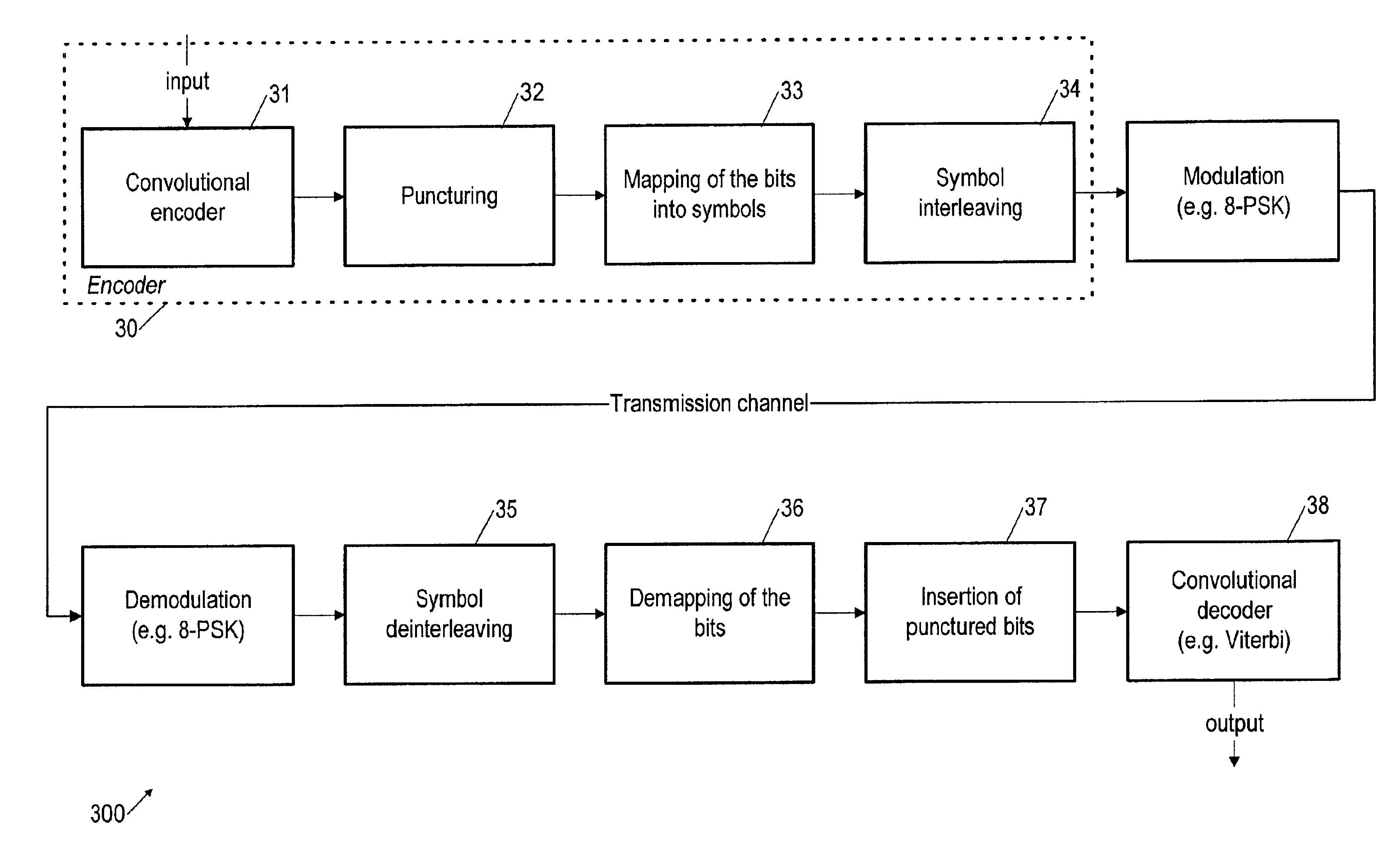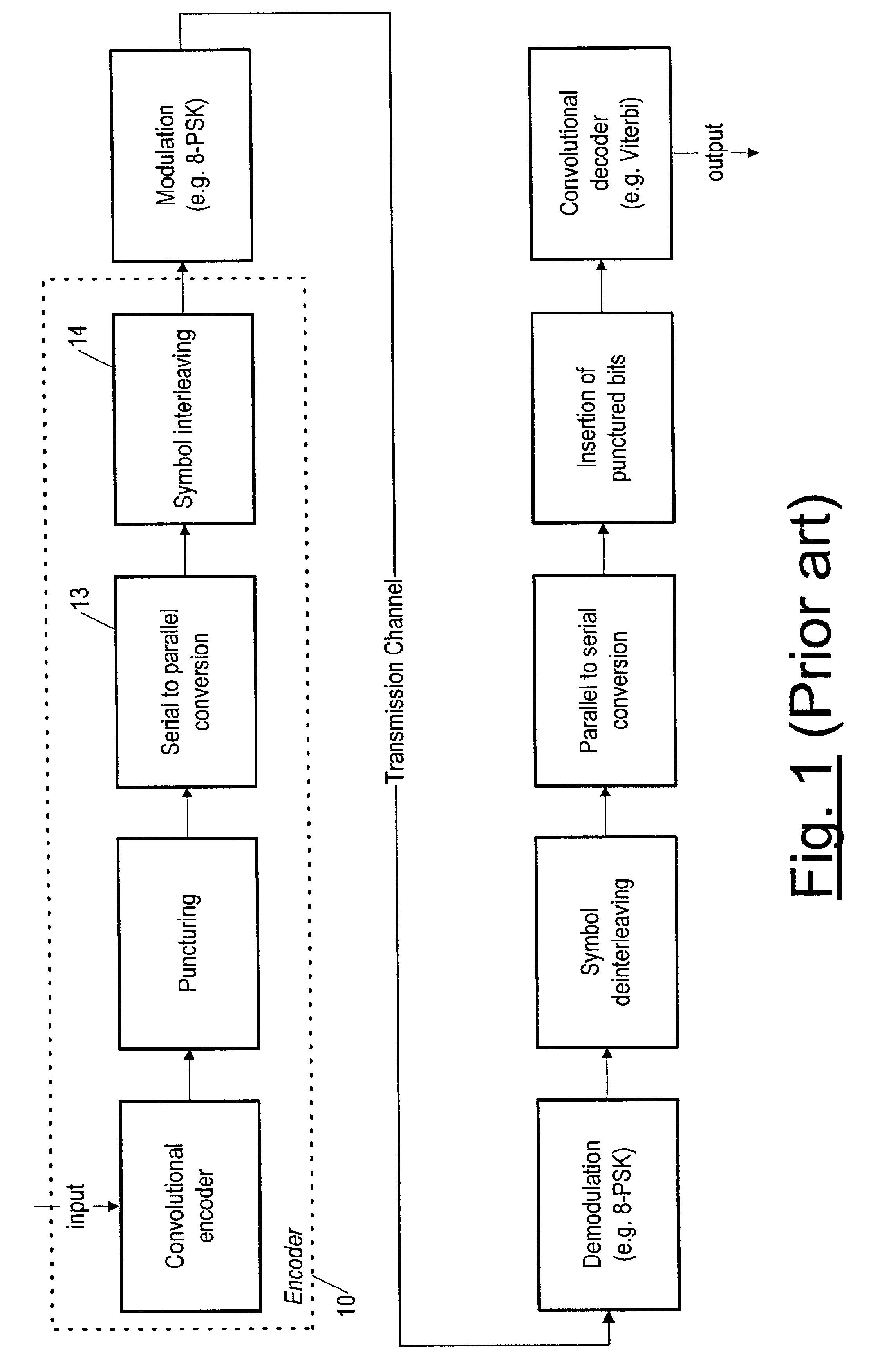Method and system for allocating convolutional encoded bits into symbols before modulation for wireless communication
a technology of convolutional encoded bits and wireless communication, applied in the field of cellular telecommunications, can solve the problems of reducing the error protection reducing the error correction performance of the code, and different error probabilities of the different bits of the symbol, so as to reduce the complexity of the operation, reduce the complexity, and reduce the complexity
- Summary
- Abstract
- Description
- Claims
- Application Information
AI Technical Summary
Benefits of technology
Problems solved by technology
Method used
Image
Examples
Embodiment Construction
[0038]Referring now to FIGS. 3 and 4, according to the invention, in a channel codec (300, 400) using modulation that transmits multiple bits per symbol where the error probability for each bit within the symbol is not the same, a mapping (33, 44) of the convolutional encoded bits (provided by a convolutional encoder (31, 41)) is performed (after any required puncturing by a puncturing module (32, 42)) so as to optimize the channel codec performance; if the channel codec includes a symbol interleaving module 34, as shown in FIG. 3, the mapping 33 of the invention is performed before the interleaving; and if the channel codec includes a bit interleaving module 43, as shown in FIG. 4, the mapping 44 is performed after the interleaving. The mapping 3344 of the invention replaces the serial to parallel conversion module 13 (FIGS. 1 and 2) of the prior art.
[0039]In the prior art, weaker bits are evenly distributed among stronger bits, decreasing the error protection performance of the co...
PUM
 Login to View More
Login to View More Abstract
Description
Claims
Application Information
 Login to View More
Login to View More - R&D
- Intellectual Property
- Life Sciences
- Materials
- Tech Scout
- Unparalleled Data Quality
- Higher Quality Content
- 60% Fewer Hallucinations
Browse by: Latest US Patents, China's latest patents, Technical Efficacy Thesaurus, Application Domain, Technology Topic, Popular Technical Reports.
© 2025 PatSnap. All rights reserved.Legal|Privacy policy|Modern Slavery Act Transparency Statement|Sitemap|About US| Contact US: help@patsnap.com



